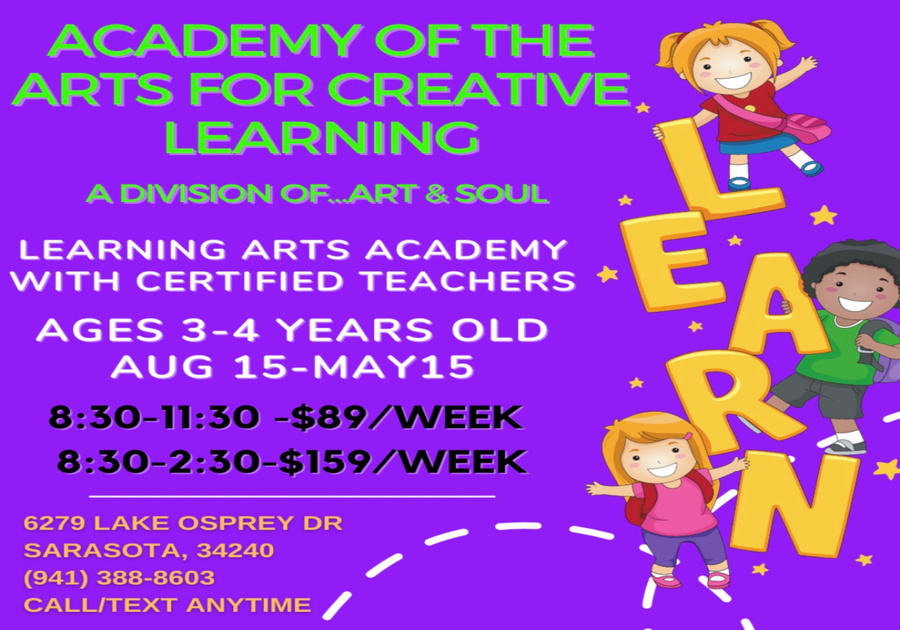Growing up in today’s world presents challenges that didn’t exist 20 years ago, so how are parents going to equip their children with the tools to overcome roadblocks and launch them on a path to success? An education that includes the arts is essential to a child’s success in developing a fulfilling life. Skills developed through participation in the arts are increasingly important in the workplace and therefore, key to a successful career.
What does learning through the arts mean?
When specific skills and techniques are taught in dance, drama, music, and visual arts, students are learning “in” the arts. When these skills and techniques are used to teach concepts in health education, language arts, math, science, and social studies, students are learning “through” the arts.
How does art help in child development?
Art is important for children especially during their early development. Research shows that art activities develop brain capacity in early childhood. Art engages children’s senses in open-ended play and supports the development of cognitive, social-emotional and multisensory skills.
What are correct examples of learning through art?
Learners explore creatively while building connections between different concepts through various art forms. Art experiences, both in visual (drawing and painting, clay modelling, pottery, paper crafts, mask and puppet making, heritage crafts etc.) and performing arts (music, dance, theatre, puppetry etc.)
How does art help learning?
Art programs have the potential to help improve a student’s memory and concentration skills, develop decision-making and critical thinking skills, enhance communication and listening skills, but also encourage focus and discipline. … An arts education can also help a student to improve self-esteem and social skills.
“All children are artists. The problem is how to remain an artist once they grow up.”- Pablo Picasso
The most beautiful thing we can experience is the mysterious. It is the source of all true art and science.” ~Albert Einstein
Why are activities with music, movement, drama, and art so successful with young children?
Through activities with the arts, children learn to express the “mysterious” – their rapidly growing understandings, their thoughts, and their feelings. The process of making art allows the artist to give image, word, sound, or movement to something that is often intangible – that is what young children do every day. They are born artists and scientists. Young children explore the arts with both a creative and a scientific “eye.” The artist in them searches for creative expression, and the scientist figures out the way to do it! Our role is to provide them with the materials and inspiration, then to stand back and let them go!
The Arts Stimulate Brain Growth
The exciting “brain” news is that participating in art, music, movement, and storytelling activities not only develops language, mathematics, science, and social skills, but these activities also strengthen the synapses between brain cells! Research shows that these synapses grow stronger through active participation in the arts. These essential activities at an early age can create new neural pathways and fortify those that are already present! For example, neuroscientists feel that the combined arts used in rhythmic movement activities (words and music) can help the young brain develop to its fullest capacity. At infancy a child has all the synapses needed to speak any language, to learn and appreciate music and movement, and to create visual art…but these synapses must be used in order to be developed.
Learning Activities With Visual Art…
WE…
- Encourage children to use their hands to manipulate clay, finger paint, weave, paint, and draw. This helps build fine motor skills – the same skills that children need to learn how to write letters and words.
- Ask children to express their feelings using color, texture, and structure. Children often use colors in their drawings and paintings to express a mood. And the textures of clay provide a perfect place to work out frustrations!
- Use art materials to observe, predict, experiment, and problem-solve. Open-ended art activities in which children have to make choices as to how to create a sculpture or picture help foster the development of these scientific thinking skills.
- Invite children to talk about their art with words and stories in order to promote language development.
- Use discussions with other children and shared experiences to shape social and emotional interaction skills. By inviting children to “title” their art, you invite them to use art as a language.
- Introduce new art materials, such as painting with feathers. This invites children to build a strong sense of success and mastery.
Learning Activities With Music and Movement…
HOW…
- With yoga, jumping, running, and dancing games to help children develop large muscle skills, strength, balance, rhythm, and coordination.
- Use rhythmic clapping games, tip toe dances, and finger plays to develop small muscles of the hands and feet.
- Through singing repetitive songs and circle dancing games, introduce the math skills of patterning, sequencing, and counting.
- Engage children in rhyming songs and in singing word games to build the essential language learning skills of communication, listening, and speaking.
- Use music and movement to express emotions and develop autonomy and social interaction. This helps foster social and emotional development.
Learning Activities With Creative Drama and Storytelling…
WE WILL…
- Invite children to act out and create stories to develop vocabulary, sequencing, listening, and memory skills.
- Explore familiar fairy tales and nursery rhymes to encourage children to learn to distinguish between fantasy and reality.
- Encourage children to act out their own feelings and the feelings of others in stories and dramatic play center activities. This helps provide a greater understanding of their own feelings and those of others.
- Explore play themes with a variety of culturally diverse materials to promote multicultural awareness.
- Invite children to express a “story” with their bodies. This provides opportunities for children to develop body awareness.
The Arts Stimulate Heads and Hearts
As humans we are a combination of emotional mind and rational mind. These two “minds” work in tight harmony to create our experience of life. Activities in the arts invite children to play with the balance of “head and heart.” There are no wrong answers in creative activities. And risk taking is definitely encouraged! Through improvisation and experimentation with the arts in a non-judgmental environment, children learn more about themselves and their world.
Let’s take a look at 10 ways the arts help kids learn and develop valuable characteristics they will need as adults.
“You can’t depend on your eyes when your imagination is
out of focus.”- Mark Twain
- Creativity
We know the arts are all about creativity because they allow kids to express themselves. Math and science are important, of course, but the visual arts push kids’ creativity and divergent thinking skills to the next level. If children practice thinking creatively, it will come naturally to them now and in their future careers.
- Improved Academic Performance
The arts don’t just develop a child’s creativity. The skills they learn often spill over into their academic achievement. A report by the Americans for the Arts states, “A student involved in the arts is four times more likely to be recognized for academic achievement.” I think most of us know this, too.
- Fine-Tuning Fine Motor Skills
For younger kiddos, simple things like holding a paintbrush, making marks with pens, pencils or crayons, and cutting with scissors are important for the development of fine motor skills. Developmental milestones around age three should include drawing a circle and beginning to use safety scissors. Around age four, children may be able to draw a square and begin cutting straight lines with scissors. This continues throughout the years where students begin to merge their technical skills with their creative skills.
- Confidence
While mastering a subject certainly builds a student’s confidence, there is something special about participating in the arts. Using materials that turn into visual stories is magical, and it helps students feel more confident. As they improve and see their own progress, their self-confidence continues to grow.
- Visual Learning
Drawing, painting, and sculpting in art class help to develop visual-spatial skills. As art educators, we know children need to know more about the world than just what they can learn through text and numbers. Art education teaches students how to interpret, criticize, and use visual information, and how to make choices based on that information.
- Decision Making
We know the arts strengthen problem-solving and critical thinking skills. Learning how to make choices and decisions will certainly carry over into our students’ education and other parts of life.
- Perseverance
As we are all aware, the arts can be challenging. I have always said, it’s called artwork for a reason! Successful artists don’t quit. They learn that hard work and perseverance pay off. This mindset matters as they grow. As artists choose their career paths, they will be asked to continually develop new skills and work through difficult projects.
- Concentration Skills
As artists persevere through a painting or a drawing, focus and concentration are imperative. We know concentration skills are also vital for studying and learning in class as well as completing professional tasks later in life.
- Collaboration
Many of the visual art projects require them to work together. They must share responsibility and compromise to achieve their common goal. I think the arts teach kids their contribution to the group is integral to its success.
- Accountability
Just like collaboration, kids in the arts learn they are accountable for their contributions to the group and to their individual artmaking. Mistakes are a part of life, and learning to accept them, fix them, and move on will serve students well as they grow older.
CLICK HERE TO LEARN MORE ABOUT THE ACADEMY OF THE ARTS FOR CREATIVE LEARNING



